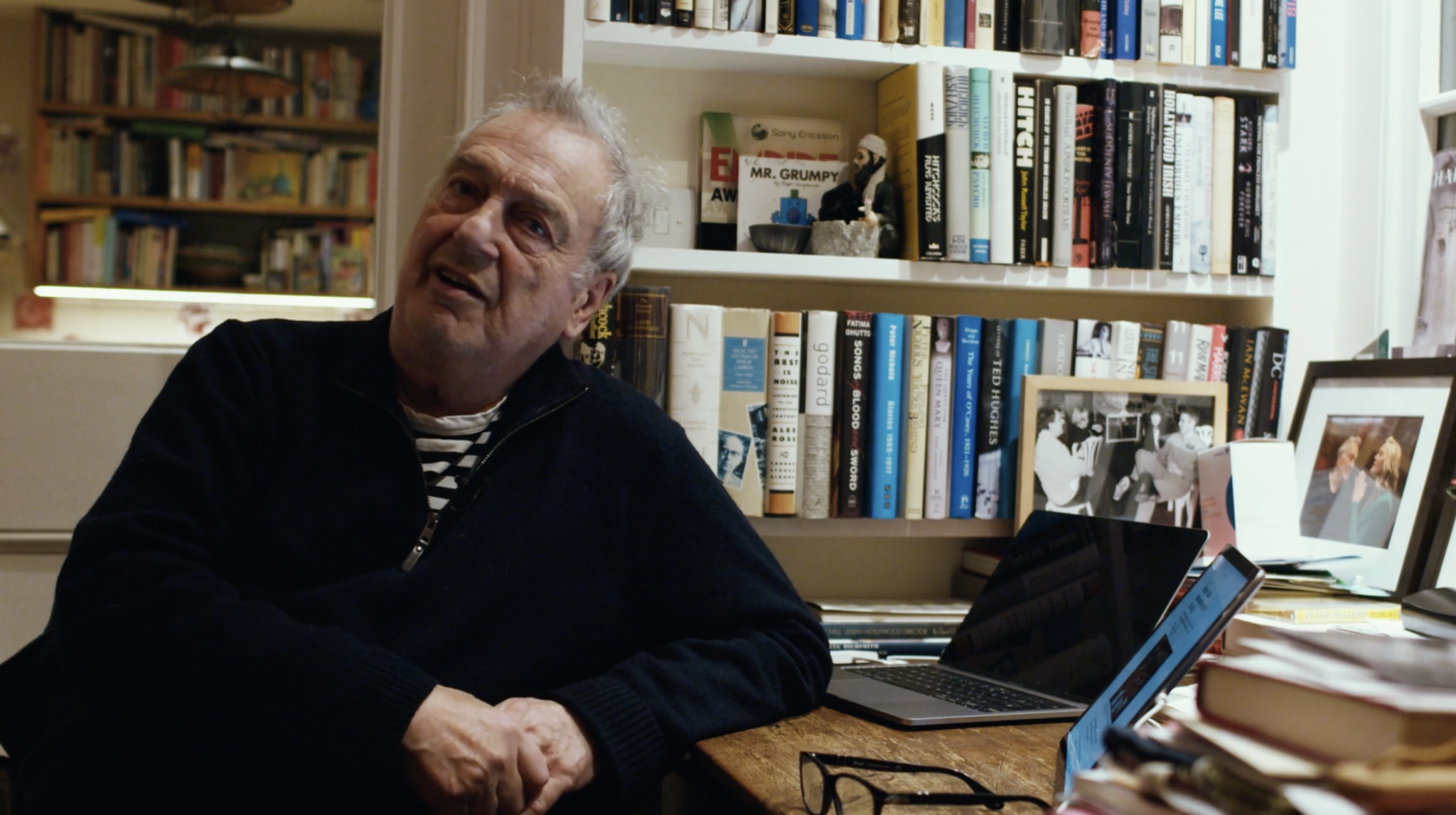
She’s a character threaded through literature and art for centuries, seducing and scaring her audience. The archetype is crazy, unpredictable, sometimes violent, suffering from mental illness, yet at the core of her character she is deeply and mercilessly…fuckable.
She’s Angelina Jolie as Lisa Rowe in Girl, Interrupted, licking a maraschino cherry, or Luisa Ranieri lying naked on a boat, blissfully aware of her mesmerised onlookers, in The Hand of God. She’s Rosamund Pike in Gone Girl, with perfect untouched blonde hair, covered in the blood of the lover she just killed, and she’s most of David Lynch’s leading ladies. Since the birth of cinema, crazy hot women have been gracing our screens, infatuating both their audience and typically male directors. The beautiful yet troubled woman is an enigmatic figure, but at her core she is a product of the male gaze.

When I was fourteen years old, I decided to spend an evening watching Darren Aronofsky’s masterpiece, Black Swan, which had long-consumed the pages of my friend’s Tumblrs (circa 2015, a time when the now more or less deceased social media platform, acted as a singular form of aesthetic escapism for wallowing teenage girls like myself). Since the little I knew of the film stemmed from heavily filtered posts of Natalie Portman on stage in feathered costumes, I went into the thriller almost blind. I quickly became infatuated with Portman’s character, Nina Sayers, an obsessive ballet dancer who strives for artistic perfection. I was conflicted, both mesmerised and terrified. Did I want to kiss her, or become her? And here lies the problem, because, in reality, I shouldn’t want either.
Yes, Natalie Portman is a beautiful actress, playing the role of a woman defined by her physical excellence, but Nina is also a girl suffering from a myriad of mental illnesses. She’s severely anorexic and shows signs of anxiety disorders and OCD behaviour. Most prominently Black Swan focuses on Nina’s psychosis, a sickness which leads to her eventual demise where she struggles to tell fact from fiction. Despite all of this, she effortlessly seduces the film’s audience including this writer, as I watched the camera linger on Nina’s thin body as she neurotically dances to Tchaikovsky’s music, almost in tears. As her psychosis worsens, Aronofsky uses a lesbian sex scene to illustrate the character losing her grasp on reality. In the film’s final scene, her consuming psychosis brings her to death on stage, presented as the ultimate form of artistic sacrifice — artistic perfection. I wonder if this was the scene which secured Portman her Oscar.

This is not to say that there haven’t been commercially successful films with more nuanced depictions of “crazy” women on screen. Girl, Interrupted, for example, portrays many types of female characters suffering from severe mental illnesses. Based on a memoir by Susanna Kaysen, the majority of the film is set in a psychiatric ward for teenage girls, after Winona Ryder’s disturbed protagonist is sent there following a suicide attempt. Since the film has Kaysen’s work as a strict reference, the depictions of the women in the psychiatric hospital are a more honest representation of the unromantic realities of these women’s lives. Yet despite this, from the moment she first appears on screen it was the cruel and charismatic Lisa who we as an audience are drawn to. Played by Angelina Jolie, an actress often referred to as the world’s most beautiful woman, Lisa is a contrast to most of the cast who are framed in a less sexual light. However, should we criticise the director or film for this depiction, as in the 90s, Jolie had an already sexualised persona, so one could argue that any role she took would be fetishized. Despite the film’s many formidable performances it was still Jolie as an erotic sociopath who won an Oscar, proving that this sexualisation didn’t restrict her talent as an actress.

During his divorce with actress Malgorzata Braunket, director Andrzej Zulawski wrote the screenplay for one of the most provocative horror films of the late 20th century, Possession (1981). Following the relationship between an international spy, Mark (Sam Neill), and his wife, Anna (Isabelle Adjani), who descends into madness after asking him for a divorce, Zulawski harnessed his own experiences to create a disturbing avant-garde depiction of a failed marriage, that closest resembles a waking nightmare than a domestic fallout. Written from the male perspective; Mark is shown to act with some reason, while Anna’s only character traits are being completely unhinged whilst remaining entirely objectified. Throughout the violence and gore, the sexualisation of Adjani’s character remains a constant theme; frequently shown naked, even a scene where she screams, frothing at the mouth covered in the blood during a miscarriage, remains erotic. The film’s most graphic scene is revealed when Anna is caught having loud passionate sex with a tentacled monster until orgasm, while her husband and the audience watch in terror and fascination. There’s no doubt that the fetishization of Adjani’s character was core to the films direction; both of Possession’s main posters depicts a naked Adjani, and with taglines like “your hidden fears will be aroused” and “inhuman ecstasy fulfilled”, audiences were surely drawn in. Its unquestionable — Possession is a beautifully crafted film, and the vulnerability of Adjani’s performance deservedly won her the best actress award at Cannes, but its use of blurring the lines between women’s pain and sexuality is up for scrutiny, as it can reinforce misinformation about female mental health.
Yet, there are directors who have showcased the realities of women suffering from mental illness in a more sympathetic light, many of which depict the psychological consequences of female fetishization. Instead of sexualising this female character, they have created more truthful depictions of the brutal toll mental illness can take on a woman. Perfect Blue, Satashi Kon’s masterful anime thriller, for example, shows the suffering of a famous pop singer, Mina, as a victim of society’s sexualisation. Mina’s dissent into psychosis is shown as a reaction to her changing public persona as she switches careers from a pop-idol to actress, coerced into filming provocative scenes by sleazy producers, and being stalked by an obsessive fan. There are easy comparisons between Perfect Blue, and Black Swan, with the former said to have inspired the latter, however, while Darren Aronofsky’s thriller allows the audience to gaze on Portman’s disturbing behaviour through an erotic lens, Perfect Blue offers a more critical view on this portrayal. Satoshi Kon uses his film to question why we as an audience are drawn to the beautiful yet troubled women.

In recent years more films have been released showing the realities of women’s mental pain, without this form of sexualisation. The Invisible Man (2020), directed by Leigh Whannell, a feminist horror retelling of H.G. Wells’ classic science fiction novel draws attention to our assumed depiction of female madness. Starring Elizabeth Moss as Cecilia, a woman literally haunted by her abusive ex-boyfriend who fakes his death and becomes invisible, the film questions why we’re so quick to label a woman as crazy. Cecilia is shown to have a severe anxiety disorder, which Moss approaches with an extreme level of realism and sensitivity, yet it’s not until her sadistic invisible ex-boyfriend makes the world think she’s completely deranged, does she start to resemble our crazy female archetype. There are similarities between the Invisible Man and Possession, for example, both a triumph of the horror genre, however, the former represents a more progressive storyline which shows the harrowing consequences of automatically assuming female madness.
It is important to note that cinema’s archetype of the hot and crazy woman is pure fantasy, although there is overall more tolerance and empathy for her than her real-life counterpart. Growing up surrounded by media from the male gaze, much of my early exposure to women’s mental illness was shown through an erotic lens, a perception I always struggled to marry with my reality. Although, in the years since my first viewing of Black Swan, my personal exposure to women’s mental health struggles have allowed me to understand its complex truths; I still haven’t been able to fully release myself from occasionally observing female madness through an erotic lens, whether in myself or others. Cinema’s obsession with the crazy sexual women exemplifies how even women’s most internal experiences can be fetishized. However now there is a shift in the industry’s awareness and female mental illness is increasingly depicted with a more sympathetic and realistic lens. This forward-thinking narrative could suggest that the archetype of the hot and crazy woman, as we currently know her, is fast-becoming a thing of the past, and in its place, a hope for a balanced alternative.












